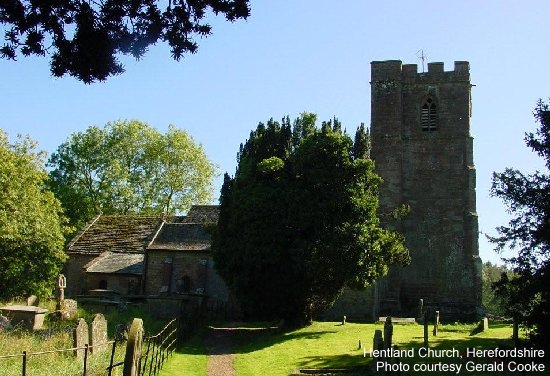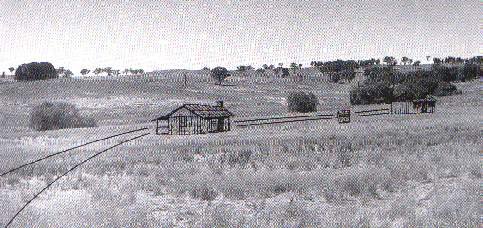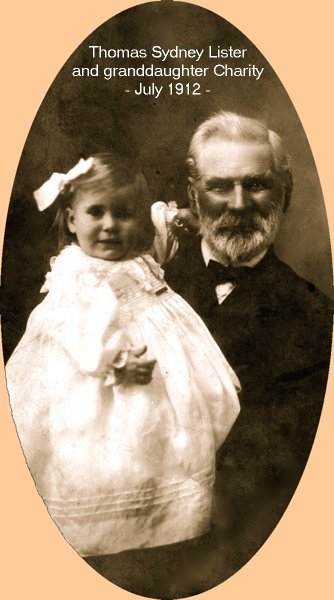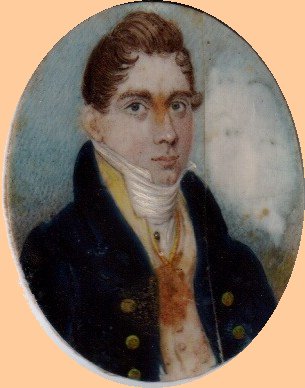
John Hardman Lister (JHL, the author's great-great-grandfather) was born in or near Scarborough, Yorkshire, on 21 August 1803.
On 30 June 1827, in St. Mary's, Whitechapel, in London, he married Susanna (or Susannah or Susan) Pymble of Hentland (near Ross-on-Wye, Herefordshire). How or where they met, we do not know, though there seems to have been an ongoing friendship between the two families.
(The preceding day, JHL had applied for a marriage permit, declaring that they were both "aged twenty-one years and upwards" - see image below. In fact, this was just two months after Susanna's 21st birthday; the groom was not yet 24. His signature does not yet have quite the flourish of the one he appended to a mortgage document a decade later in Australia - see below.)
JHL died in a road accident in the vicinity of Bathurst, New South Wales, on 12 July 1850, a few weeks short of his 47th birthday (though his headstone claims he was 48).
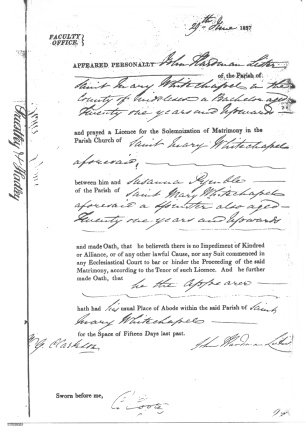

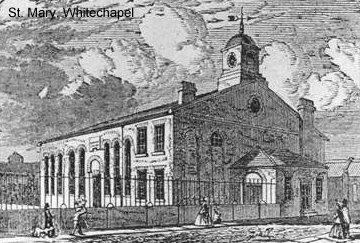
Genealogy
JHL was the son of John Hardman Lister (20 Aug 1781-1810), ship owner of Scarborough, Yorks. and Elizabeth Waterworth who m. 27 July 1802 at Whitby. His mother died when he was about four years of age and his father and grandfather when he was six. In the meantime, his father had remarried, so he was brought up by his stepmother and/or his widowed grandmother, Rebecca Hardman Lister.John Hardman Lister Senior, who died at the age of 28, was the son of Richard Humpton Lister (1751-c. 1811), lawyer of Scarborough, and Rebecca Hardman.
Richard Humpton Lister was the son of James Lister (1732-1814), lawyer of Snainton (about 15 km W of Scarborough) and East Ayton, and Dorothy Humpton.
James Lister was the son of Mathew Lister of Malton, York and Heigholme Hall, Leven (about 11 km NE of Beverley), grocer, merchant, admitted to Freedom of the City of York by patrimony, 1732/33, alderman in 1749 and Lord Mayor in 1750, m. Frances Mannel.
Mathew Lister was the son of William Lister of York, grocer and merchant, admitted to the Freedom of the City of York by patrimony in 1697/98 and elected Sheriff (the second most important civic post) in 1711.
William Lister was the son of Christopher Lister of York, mercer, admitted to the Freedom of the City of York, 1652/53, during Cromwell's interregnum (York had been largely spared the ill effects of the Civil War in which 10% of Englishmen had died and was at that time the second city in England - and certainly the most important in the north of the country).
These forebears are treated in greater detail on a specific Lister/Humpton/Hardman page.
The Seafaring Life
According to one story, JHL was said to have "sailed as a midshipman on his father's convict transport Fortune to Newcastle, NSW, in 1819/20": if this is so, it was not the same Fortune he later sailed in as captain, since that ship was not built until 1825, and anyway his father had died in 1810. [Have not yet found any documentation to support this story: JHL does not appear in the "ships' musters" 1816-25. JHL was only six when his father died. JCC 12/05]In any case, JHL subsequently became a very competent Master Mariner himself.
JHL's and Susan's first child was born in Hentland, Herefordshire, on 12 May 1828. He was christened John Hardman Australia Lister Junior. The name "Australia" is reputed to have been added as a mark of Captain Lister's respect for the maritime achievements of Matthew Flinders, who in 1801-1803 had circumnavigated Australia in an open boat and had popularised the name "Australia" (formerly "Terra Australis" or even "New Holland").
During February 1830, Lister took command of the 340-ton barque Wave.
The Wave was a single-decked vessel built in 1826 of blackbirch, hatchmatack and pine, and sheathed with copper; she carried four guns. She was owned by a Mr Johnson and this was her third London-Sydney run. On her first voyage, she left London on 6th May 1828 and arrived in Sydney via Hobart Town on 2 December 1828. Her second voyage was in 1829, to deliver a detachment of troops of the 63rd Regiment to Van Diemen's Land (as Tasmania was called until 1856), under Captain Hide.
The First Voyage Together: 1830-31
The Wave, carrying "general merchandise", left London on 17 February 1830 for Hobart and Sydney via Table Bay (whence they departed on 14 May). Lister's wife and young son travelled on board as cabin passengers. Susan Lister was expecting her second child. According to an oft-repeated story, a 14-year-old cabin boy named Edward Hammond Hargraves assisted in entertaining young John Lister Junior, this acquaintance having dramatic consequences 21 years later at Guyong during the search for payable gold in New South Wales. The Wave arrived in Hobart Town, Van Diemen's Land (called Tasmania from 1856), on 25 June 1830 (Susan's first visit to Australia). Here her second child, Sarah Susannah, was born on 15 July.The Hobart Town Courier of Saturday 26 June 1830 reports:When the baby was two weeks old, the Listers departed Hobart (1 August) for Sydney, where they arrived on 7 August 1830. According to the Arrivals Report in Sydney, in addition to the Lister family there were eight passengers and one child in cabin class and five passengers in steerage. The cargo on this stretch, including "part of the original cargo", consisted of "Goods/Potatoes, oil, Colonial beer, apples, 1 case of charts, 1 case of pictures etc." There were 17 passengers and an agent, and the crew was made up of 18 men. The Arrivals Report shows Mrs Lister with one son over 12 years of age [sic!] and one daughter under 12 years of age. [Except where the captain himself made a declaration, the manifests do not seem to be very reliable.] Susannah Sarah was baptised twice: the first time at St Philip's Sydney and the second time at St Mary's Whitechapel, London where her parents had been married.
Arrived yesterday, the 25th instant, the bark Wave, Captain Lister, with goods, from London 16th Feb. Passengers per Wave, - Captain Watson, Mr Robt. Watson, Mr. Thomas Watson and Dr. Spence, on his return from Madras. Mr. Menzies, Mr. Kerk, Mr. Haywood, Mr. Shelvesson, Mr. and Mrs. Sullivan and child, Mr. and Mrs. Lazarus and child, Mr. Roberts.
The Hobart Town Courier of Saturday 17 July 1830 reports:
Among the goods brought out by the Wave for the Van Diemen's Land Company, we have much pleasure in observing a very excellent assorment [sic] of fruit trees of all kinds. Capt. Lister must have taken unwearied pains in attending to them during the voyage, as almost every one is alive with the exception of the strawberry and raspberry bushes which have entirely perished. We regret however to see that the whole of the apple trees are covered with American blight, the insect being already matured and prepared to fly the moment the box is opened. Though this proves that the insect must have been in the ground or round the roots in the first instance, it evidently shews that the close atmosphere which it enjoyed in the pent up boxes, is peculiarly favourable to its propagation. And thus we see that those gardens which are in the lowest and most confined situations, and but little exposed to winds are most attacked by it.
The same Hobart Town Courier of Saturday 17 July 1830 carries this advertisement:
July 1, 1830.
JUST landed ex Wave, and on sale at the Cellars of the undersigned -
300 doz. double brown Stout in tierces of 3 doz. each.
20 pipes Cape Madeira.
ROBERT STODART.
Elizabeth street, July 1, 1830.
The Hobart Town Courier of Saturday 24 July 1830 advises:
JUST imported per Wave, 100 casks very superior bottled ALE, and 50 hogsheads of Taylors Double BROWN STOUT.
Henry Bilton.
Rock House, July 10th.
and:
FOR LONDON DIRECT.
The fast-sailing first-class Ship, Wave, J. H. Lister, Commander, Burthen per Register, 340 tons, is now on the point of sailing for Sydney, and will return immediately to load for the above Port. This Vessel having already taken on Board Sixty Tons of Oil, for dead weight, will be despatched, on her return from Sydney, with the least possible delay.
The Wave possesses very superior accommodation for Passengers.
Liberal advances will be made to shippers of produce, and wool intended for the Wave, will be warehoused free of expense.
For Freight or Passage apply to
W.M. ORR.
Agent
The Sydney Gazette and New South Wales Advertiser of Tuesday 10 August 1830:So after spending a month in Sydney, they set out again for Hobart on 19 September, carrying "general goods for London and Hobart Town, 8 passengers, Williams family etc." They arrived in Hobart on 30 September.
FOR LONDON, VIA HOBART TOWN.
TO SAIL, next Month, the principal part of her Cargo engaged at Hobart Town, the fast-sailing Barque WAVE, 320 Tons Register, LISTER, Master.
For Freight or Passage, apply to the Master, on board ; or, to CAMPBELL & CO.
August 9, 1830.
[Identical advertisements continued to appear in the Gazette until 2 September.]
The Sydney Gazette and New South Wales Advertiser of Tuesday 21 September 1830:
EXPORTS.
Vessels cleared from the 13th to the 20th September, inclusive. WAVE (barque), Lister, master, for Hobart Town and London - shipped at Hobart Town for London, 4 cases pipe lead, 1 cask pump heads, 1 cask nails, 46 casks black oil, 8 casks tan, 4 casks pitch. Shipped at Sydney for London - 2 casks cocoa nut oil, 102 bales wool, 2 boxes shells, 2 cases, 2 boxes specimens of natural history, 1 box haberdashery, 1 case charts. Shipped at Sydney for Hobart Town - 222 pieces cedar, 6 pieces mountain ash, 2 cases containing a pulpit, 1 cask 2 cases, and 15cwt. cheese, 1 cask fishing lines, 2 bundles clothes lines, 1 box containing 1 bottle oil of peppermint, 16 coils cordage, 9 cases, 1 box oranges, 1 case haberdashery, 2 coils spun yarn, 1 tool chest, 150 bushels corn, 15cwt. bacon.
The Hobart Town Courier of Saturday 2 October 1830:In their fast-sailing vessel, they arrived in London in June 1831.
Arrived on Thursday the 30th ultimo, the bark Wave, 340 tons, J. H. Lister commander, from Sydney 19th Sept. with a general cargo of goods: Passengers, Mr. and Mrs. Williams and 3 children, Mr. White, Mr. Kayll, Mr. Roberts, Mr. Tulloch, Mr. Compton, and Mrs. Williams's servant.
FOR LONDON DIRECT.
THE fast-sailing first class ship Wave, burthen per register 350 tons, J. H. Lister, Esq. commander, will sail for the above port in five weeks from this date. [It actually sailed after more than three months.]
This vessel posesses the most excellent accommodation for pas[s]engers, and having already on board above 100 bales wool, and 200 tons oil engaged, her stay in the Derwent will not exceed the above named period.
For freight or passage apply to the commander on board or to the undersigned, who will make libera[l] advances on wool intended for shipment in the Wave, and warehouse the same free of expense.
W. M. ORR, Agent.
[Exactly the same advertisement appeared in the Courier most weeks until 11 December.]
The Hobart Town Courier of Saturday 27 November 1830:
GENERAL POST OFFICE.
Hobart town, Nov. 28, 1830.
THE Mail for England, per Wave, Capt. Lister, will be closed on Saturday the 11th Dec. next, at 8 o'clock precisely.
The Hobart Town Courier of Saturday 18 December 1830:
GENERAL POST OFFICE.
Hobart town, Dec. 16, 1830.
THE Mail for England, per Wave, Capt. Lister will be closed on Tuesday the 28th inst, at 8 o'clock precisely.
J. T.COLLICOTT,
Postmaster.
The Hobart Town Courier of Saturday 8 January 1831:
Sailed on Tuesday the 4th instant [at last!], the barque Wave, Capt. J Lister, with a cargo of colonial produce for London, viz. - bales wool, 449 bundles whalebone, 439 casks oil, and 7 cases curiosities. Passengers - Stewart, Mrs. Beamont, Mrs. Lister and two children, and Mr. J. Williams, Mr. B. Goodman.
But on the other hand...
Vessels remaining in the harbour, January 8, 1831...
Barks. -Wave, for London.
Cargo of the Wave.
113 bales Wool, by H. Hopkins. 44 do. do. and 69 bundles whalebone, W. M. Orr. 59 do. do. and 1 case curiosities S. Adey. 5 bales wool, F. Harrison. 287 casks whale oil, and 321 bundles whalebone, W. Mawle. 8 bales wool, W. Bunster. 105 casks oil, and 1 case curiosities, J. Lightfoot. 1 case books, H. Melville. 1 do. veils, J. Haskell.
Shipped for [= on behalf of?] Sydney - 102 bales wool by Mr. Thompson. 90 casks oil and 4 cases sundries Capt. J. Lister.
The Second Voyage: 1831-32
On 13 October 1831, the Wave with JHL as Captain, set off again carrying "merchandise", arriving in Hobart 20 February 1832. This time there is no mention of Mrs Lister and indeed it seems likely that Susannah was not present on this journey: Mr Fowles says she had "been round the world three times" before his voyage, and this would have made a fourth.The Sydney Gazette and New South Wales Advertiser of Saturday 18 February 1832:It is interesting to note that the captain did a certain amount of trading on his own account as well as offering transport services. On the return journey, the ship left Sydney on 20 April 1832 for Hobart and London, with the usual delays for the assembling of cargo.
The Wave, Lister master, may be daily looked for, having left London with merchandise, for Sydney direct, on the 13th October last.
[News of the London departure must have been brought by an even faster sailer! And the route was hardly "direct", given the layover of more than a month in Hobart...]
The Hobart Town Courier of Saturday 25 February 1832:
Arrived on Monday the 20th instant, the bark Wave, Capt. Lister, from the Downs, 16th October, with a general cargo of goods. Passengers, - Mr. Chapman, Mr. Lightfoot, Mr. Cenlis, Messrs. P. Johnson, Edward Sinnot, Mutton, Davies, Atkinson, Mr. & Mrs. Webb, Mr. & Mrs. Parker, Mr. and Mrs. Tutton, Mr. and Mrs. Speed ; and for Sydney, Mr. and Mrs. Maycock, Mr. Armstrong and child, Mr. Brewer and 2 New Zealanders.
The Hobart Town Courier of Saturday 19 March 1832:
FOR SYDNEY,
THE fine fast sailing ship Wave, J. H. Lister, Commander, burthen per register, 350 tons, will sail for the above Port in 21 days from this date. Has very excellent accommodation for passengers. For freight or passage apply to the Commander on board, or to
W. M. ORR, Agent.
The Sydney Gazette and New South Wales Advertiser of Thursday 5 April 1832:
Shipping Intelligence
ARRIVALS.
From London, via Hobart Town, on Tuesday last, the barque Wave, Captain Lister. Lading, merchandise. Passengers, Mr. M'Kenzie, Mr. Stephenson, Mr. and Mrs. Haylock, Mr. Brewer, Mr. Lazarus, Mrs. Boyce and child, Mr. and Mrs. Ryley, Mr. James Lloyd, Mr. John Gofton, Mr. and Mrs. Parker, Mr. Sinnott, Mr. John Monday, Alphonso Alkali, Harry Hayti, Thomas Hagan, and William Wade, a prisoner from India.
FOR HOBART TOWN,
TO SAIL IN FOURTEEN DAYS,
The barque WAVE, 400 tons, Captain Lister. For Freight or Passage, apply to the Master on board ; or to CAMPBELL AND CO.
April 4, 1832.
The Sydney Gazette and New South Wales Advertiser of Tuesday 10 April 1832:
Sydney General Trade List.
COMPILED FOR THE SYDNEY GAZETTE, AND PUBLISHED UNDER THE AUTHORITY OF THE CUSTOMS.
IMPORTS.
Reports from the 2d to the 9th Instant, inclusive...
----- 3. ---WAVE (barque), 340 tons. Lister master, from London via Hobart Town ; Campbell & Co. agents ; 50 hhds. beer, Richard Jones & Co. ; 6 cans tanners waste, George Bunn ; 19 puncheons rum, Campbell & Co.; 11 casks glassware, A. B. Spark ; 30 casks corks, C. & F. Wilson ; 1 case books and apparel, 4 bales cottons, 6 bales slops, 1 case whips, 1 case leather, 3 casks beer, J. B. Montefiore & Co. ; 42 casks beer, 5 casks cider, 10 casks wine, 1 hhd. gin, 1 hhd. brandy, 11 cases mustard and pickles, 12 casks glass, 1 case shoes, 6 casks, 2 cases earthenware, 1 case stationery, 1 case haberdashery, 5 cases lamp cotton, 22 barrels painters colours, 10 casks oilmans' stores, 17 casks blacking, 15 casks Bath bricks, 34 barrels whitning, J. H. Lister; 1 case apparel, P. M. Hosking ; 1 case apparel, 1 case hats, 1 case candlewick, 14 tons iron, 6 barrels rosin, 20 bundles oakum, 21 cases Tobacco pipes, 18 barrels currants, Order ; shipped at Hobart Town ; 1 cask, 1 case apothecary, J. Macnaughtan ; 2 bales carpeting, 2 tons potatoes, Lamb & Co. ; 1 cask apples, F. Watkin ; 1 bale slops, 1 case haberdashery, J. B. Montefiore & Co. ; 1 cask copperas, 6 cans oil of vitriol, Smith Brothers ; 5 bundles kangaroo skins, T. Brett ; 2 bales slops, 1 case books, 1 case looking-glass, 4 cases ironmongery, 2 cases household furniture, 1 filterer, 1 case jewellery, 8 bundles kangaroo skins, 47 bags wheat, Order.
The Hobart Town Courier of Saturday 21 April 1832:The Wave stayed in Hobart, then, from 27 April till 2 August 1832, arriving back in London 21 Jan 1833 via Rio de Janeiro.
FOR LONDON.
THE fine fast sailing bark Wave, 340 tons, J. H. Lister, commander, having 200 tons of bark engaged, will, on her return from Sydney, load with all possible dispatch for the above port.
This vessel is expected to arrive within 14 days from this date, and possesses very excellent accommodation for passengers.
For freight or passage apply to WILLIAM M. ORR,
Agent.
April 20, 1832.
and every week all through May and on into July...
The Hobart Town Courier of Friday 6 July 1832:
FOR LONDON DIRECT.
THE fine first class bark Wave, J. H. Lister, Commander, burthen per register 360 tons, will positively sail on the 20th instant.
For passage only apply to
W. M. ORR, Agent.
July 5, 1832.
The Hobart Town Courier of Friday 6 July 1832:
GENERAL POST OFFICE, Hobart town. July 5, 1832.
THE Mail for England per Wave, Capt. Lister, will be closed on Saturday 28th inst.
J. T. Collicott, Principal Postmaster.
The Sydney Gazette and New South Wales Advertiser of Thursday 16 August 1832:
We have just received by the Funchal, the Colonist of the 27th July and 3d of August, our space admits of no more than the following extracts at present...
AUGUST 2. -- Sailed, the barque Wave, Captain J. W. Lister, for London, with 428 bales wool, 110 tons bark, 102 bales New Zealand flax, 80 planks blue gum, sundry packages, whalebone, curiosities, skins, British and Foreign goods, shipped by Messrs. Kemp & Co., Hewitt & Co., George Watson, Montefiore & Co., Henry Hopkins, Wm. Bunster, S. Adey, Murdoch Brothers, C. Seal, J. T. Gellibrand, W. M. Orr, A. & T. Betts, G. C. Clark, P. Harrison, E. Hodgson, G. Garehouse, Captain Lister, J. Makepeace, J. Sprent, J. Reed, J. Brown, J. Clark, J. Brown, W. Hall, J. Gow, and J. Backhouse. -- Passengers, F. Arthur, Esq. and servant ; Mr. and Mrs. Betts, and three servants ; Mr. Smith ; Dr. Stephenson ; Mr. and Mrs. Earle, and child ; Mr. J. Carter; Mr. Skilverston, and Mr. Lightfoot.
The Times, Saturday, Jan 26, 1833:Family lore has it that upon his return from one such long absence, a maid attempted to reintroduce JHL to one of his children. He is said to have brushed the maid aside, saying: "Never mind the child. Where is my beloved Susannah?"
VESSELS SPOKEN WITH: ... The Wave, from Van Dieman's Land to London, the 4th instant lat. 42 [or it could be 12] long 25, by the Elizabeth arrived at Plymouth.
[42°W 25°N is about 260 miles NW of the Azores, just over 1000 miles short of Lands End.]
The Times, Monday, Jan 28, 1833:
PENZANCE, Jan 21. Arrived the Wave from Van Dieman's Land, sailed the 11th of August and from Rio de Janeiro the 29th of October.
The Listers spent 1833-34 in the UK (or if they were travelling, we have not yet discovered where). Elizabeth Lister (their third child) was born in 1833. Elizabeth always told her family she was born in Hoarwithy [51°57'40"N, 2°39'43"W] and that is entered on her daughter Nell's birth certificate.
The Wave sailed again in 1834 for Australia but the Captain was Goldsmith. [By chance, Captain Lister came across the Wave again in Hobart and Sydney in January 1837 and again in Hobart in August 1838 - small world! The Wave - presumably the same vessel - was en route from Adelaide to Albany WA on 4 July 1848 when she was "blown on shore" at Cheynes Beach and wrecked.]
The Third Voyage: 1834-36
From 1834, the Captain commenced a regular run between England and the colony as Master of the barque Fortune, "311 86/94" tons, built by Sam Finch in 1825 in the Port of Quebec (her home port was Glasgow). She was 99 feet long, 27 feet wide and 18 feet deep to the underside of the deck (30.2m x 8.2m x 5.5m) and carried two guns.The Times, Monday, Nov 24, 1834:The Listers left London on 22 November 1834 and arrived in Sydney on 28 March 1835: Mrs Lister is recorded as a cabin passenger but there is no mention of her children. It is interesting that JHL completed a questionnaire on arrival which may be viewed in the Record of Vessels Arrived at the Archives Office of NSW, Globe St., The Rocks. He states that he had 2 officers, 15 mariners and 15 passengers and had had no illness aboard. They had touched at no intermediate ports [!] and had "spoken" only one ship, the Drummore of Leith from Marseille bound to the Isle of France [Mauritius] - out 94 days - all well. [This means that 33 people travelled non-stop for over four months on a ship measuring 30m x 8m and managed to communicate with only one ship during the entire voyage. One supposes they managed to catch rainwater.] The barque "Surry" [sic] of 363 tons left the UK on the same day and arrived in Sydney on the same day - this was sufficiently unusual for an annotation to have been made.
VESSELS CLEARED OUTWARD WITH CARGO ... the Fortune, to Sidney.
[Fortune had arrived back on 15 August from Bombay, where she had arrived from Glasgow on 9 February.]
The Sydney Gazette and New South Wales Advertiser of Tuesday 7 April 1835:JHL then made a round trip, apparently without his wife but with 212 sheep, to Calcutta, returning via Singapore (whence he dep. 8 August) and Batavia [Jakarta] (dep. 4 September), arriving Sydney on 17 October 1835 with no passengers but with "General merchandise, Flour etc".
March 31 - FORTUNE (barque), 311 tons, Lister master, from London, Hughes and Hosking, agents ; 120 casks rum, 6 casks brandy, 6 casks gin, 2 casks 2 bottles apothecaries, 20 cans oil and turpentine, 6 mill stones, 2 steam-engine boilers, 7 cast wheels, 167 pieces cast and wrought iron 50 iron pots, 52 pieces iron pipe, 6 casks 2 cases 75 bundles 224 bags ironmongery, 20 barrels vinegar, 68 casks beer, 26 jars herrings 16 casks blacking, 50 casks pork. 42 casks and 50 tons salt, 60 pockets hops, 70 boxes window glass, 11 casks 2 crates earthenware, 20 bundles sacks, 2 bales canvas, 5 bales woollens, 2 cases saddlery, 6 bales blankets 30 cases glassware, 15 cases 3 casks sundries Hughes and Hosking ; 6 cases 1 cask Epsom salts, 2 casks cream tartar, 4 casks brimstone, 1 cask soda, 5 cases magnesia, 4 casks yellow ochre, 5 casks glue, 26 casks painters' colours, 4 casks pipeclay, 8 casks Bath bricks, 20 casks whiting, 5 casks rotten stone, 1 carriage, 2 gigs, 1 case hats, 3 cases millinery, 19 casks earthenware 5 cases glass, 1 case stationery, 1 cask signals, 1 cask paints, 20 hogsheads porter, 6 casks ale, 20 barrels porks. 20 cases oil-man's stores, 18 sheets milled lead, 411 bars 56 56[sic] bolts 5 bundles iron, 4 bags coffee 2 carotels currants, 4 casks figs, 6 bags pimento, 310 deals, Captain Lister ; 12 cases felt, A. Fotheringham ; 4 cases oil, 20 jugs oil and turpentine, 1 cask colours, 1 cask varnish 2 casks salt, 39 cases 19 casks 2 bales 3 crates 3 pockets 1 bundle British goods, Campbell and Co.; 7 bales slops, 6 cases stuffs, 4 bales cottons, 4 barrels rice, Marsden and Co. ; 1 case apparel, Captain Westmacott ; 1 case apparel, Major England ; 5 bags carroway seeds, 60 bags 5 casks ginger, 10 cas[e]s raisins, 1 cask sugar, 12 baskets oil, 6 casks colours, 1 cask salts. 1 sack seeds, 30 bags pepper, 8 bags pimento, 34 bags coffee, 2 casks currants, 31 bundles sarsaparilla, H. Mace; 1 case millinery, E. Manning; 4 bales blankets, 12 bales slops, 3 bales canvass; R. Campbell, jun. and Co. ; 4 cases clocks, 4 cases paper, 13 cases printing press, 1 cask ashes, 1 case printers' stone, Rev. J. Orton; 17 casks rum, 1 cask brandy, 1 cask gin, 10 casks wine. F. B. Moncur; 1 cask books, Rev. R Hill ; 10 serons barrilla, 18 kegs paints. 2 pairs smiths' bellows, 3 bundles hardware, 1 bale British goods, Order.
The Sydney Gazette and New South Wales Advertiser of Tuesday 2 June 1835:Fortune was still discharging in the harbour on 10 November 1835.
EXPORTS.
FORTUNE, 311 tons, Lister master, for Calcutta ; 212 sheep. 10 casks wine, 10 cases salad oil, 5 cases Epsom salts, and stores.
Vessels entered outwards since last publication...
-- FORTUNE, 311 tons, Hughes and Co. agents, Calcutta.
DEPARTURES.
For Calcutta, on Sunday last, the ship Fortune Captain Lister with sheep, &c.
The Sydney Gazette and New South Wales Advertiser of Tuesday 20 October 1835:
ARRIVALS.
From Singapore and Batavia, on Saturday last, having left the former port the 8th of April [= August? they had only arrived in Sydney from London at the end of March], and the latter the 4th September, the ship Fortune, Captain Lister, with merchandize.
The Sydney Gazette and New South Wales Advertiser of Thursday 12 November 1835:
FOR LONDON DIRECT,
THE fine fast sailing Barque
FORTUNE
312 Tons Burthen, J. H. Lister Esq. Commander, will have early despatch, for the above port.
For Freight or Passage, apply to the Captain, on board ; or, to
HUGHES & HOSKING,
Albion Wharf.
Sydney, October 23.
N. B. - Advances will be made on Wools, &c shipped in the above Vessel.
The Sydney Gazette and New South Wales Advertiser of Tuesday 5 January 1836:
The ship Fortune, Captain Lister, is fast loading for London, and is announced to sail on the first proximo.
The Sydney Gazette and New South Wales Advertiser of Thursday 4 February 1836:
DEPARTURES.
For London, this morning, the barque Fortune, Captain Lister, with a cargo of Colonial produce. Passengers, Lieutenant Ben[s]on, Mrs Benson and two children, Mr. Owen Mrs. Leach, Mrs. Lister, child, and servant. Mrs. Wright and four children, Mr. and Mrs. Cornish, and four children, Mr. O'Byrne, Mr. Barnes, Mr Jones, Mr. Bullock, and Mr. Callaghan.
The Sydney Gazette and New South Wales Advertiser of Tuesday 9 February 1836:
EXPORTS
Vessels cleared from the 30th Ultimo, to the 6th Instant, inclusive...
FORTUNE, 311 tons, Lister, master, for London; 293 bales wool, 20 casks and 117 ox and cow hides, 2 tons hoofs, 2 tons bark, 62 pieces cedar, 225 casks black oil, 718 bundles 5 baskets whalebone. 1 cask seal skins, 4 cases curiosities, 3 catties tea 26 casks wine, and stores.
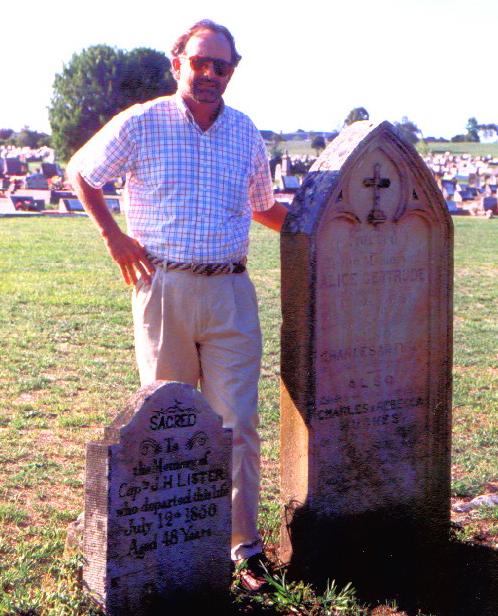
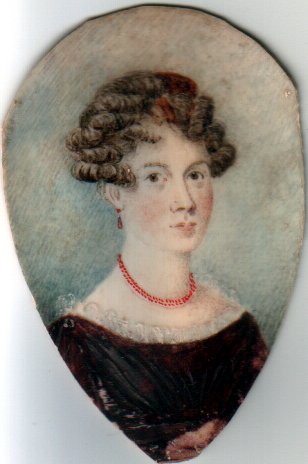 Susanna (the author's great-great-grandmother - see likeness at right), daughter of Philip Pymble (1774 - 1832) "of Llanfrother Manor, Ross-on-Wye, Herefordshire" and Susannah White (c. 1771-1851), was born probably early in 1806 and was baptised on 29 April 1806 at St Dubricius (St. Dyfrig) Church of England in Hentland, Herefordshire (51°56'2.86"N, 2°39'57.79"W). She died early in November 1889 (probably 2 Nov - the death certificate is unclear) "at Cargo" NSW of "senile decay" and "paralysis" at the age of 83, after 51 years in Australia. It is thought she died at "Woodstock", the property of her son Thomas, on the Cargo road near Orange.
Susanna (the author's great-great-grandmother - see likeness at right), daughter of Philip Pymble (1774 - 1832) "of Llanfrother Manor, Ross-on-Wye, Herefordshire" and Susannah White (c. 1771-1851), was born probably early in 1806 and was baptised on 29 April 1806 at St Dubricius (St. Dyfrig) Church of England in Hentland, Herefordshire (51°56'2.86"N, 2°39'57.79"W). She died early in November 1889 (probably 2 Nov - the death certificate is unclear) "at Cargo" NSW of "senile decay" and "paralysis" at the age of 83, after 51 years in Australia. It is thought she died at "Woodstock", the property of her son Thomas, on the Cargo road near Orange.
